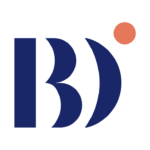ว่ากันว่า “Data Governance เป็นงานของ IT” ความจริงแล้วเป็นเช่นไร?
ในปัจจุบันที่เราต้องทำงานกับข้อมูลจำนวนมากขึ้น หรือบางองค์กรมีเป้าหมายใหม่ ๆ ซึ่งมีวลีเท่ ๆ ว่า “…สู่การเป็น Data Driven Organization…” แต่คนที่ทำงานกับข้อมูลก็ยังคงประสบปัญหาคลาสสิก เช่น ข้อมูลที่ฉันต้องการอยู่ที่ไหน? ฉันรู้ เพื่อนฉันรู้ ทุกคนรู้ ว่าอยู่ในองค์กรเรานี่แหละ แต่อยู่ไหน? หรือการใช้เวลาเป็นวัน ๆ เพื่อจัดการทำความสะอาดข้อมูลให้พร้อมใช้ทำรายงานเพียง 1 หน้า ด้วยสาเหตุเหล่านี้ ทำให้องค์กรส่วนใหญ่ทั้งภาครัฐและเอกชนเริ่มทำ Data Governance หรือ การธรรมาภิบาลข้อมูล ซึ่งก็คือการกำกับดูแลข้อมูลให้มีความถูกต้อง มีความสมบูรณ์ มีความทันสมัย และได้มาตรฐาน
ก้าวแรกในการทำ Data Governance คือการจัดทำ Data Policy ซึ่งต้องอาศัยกลุ่มคนที่จัดตั้งขึ้นมารับผิดชอบงานนี้โดยเฉพาะ หรือที่เรียกกันว่า Data Team เราอาจเคยได้ชื่อตำแหน่งเหล่านี้ Chief Data Officer, Data Steward, Data Custodian, Data Stakeholder, Data Owner, Data Creator, System Analyst และอื่นๆ ซึ่งก็ขึ้นอยู่กับสำนักที่ออกแบบ Framework ของ Data Governance แต่หากให้จัดกลุ่มคนตามบทบาทและหน้าที่แล้ว จะได้ 3 กลุ่มหลัก ๆ คือ Data Committee, Data Steward, และ Data Custodian เรามาทำความรู้จักกับคนสามกลุ่มนี้กันครับ

1. Data Committee
คนกลุ่มนี้สำคัญที่สุด คณะทำงานประกอบด้วยผู้บริหารระดับสูงขององค์กร เช่น Chief Executive Officer, Chief Information Officer, Chief Data Officer, และ Chief Security Officer ที่จะนั่งหัวโต๊ะและฟันธงเรื่องต่าง ๆ โดยมีคนอีกกลุ่มคือ ผู้ที่ใช้ข้อมูลและมีส่วนได้ส่วนเสียกับข้อมูล เช่น Data Stakeholders, Data Owners, และ Data Users ซึ่งเป็นกลุ่มคนที่รู้เรื่องข้อมูลดีที่สุด เพราะเป็นผู้ที่คลุกคลีกับข้อมูลมาโดยตลอดจึงทราบปัญหาและความต้องการของการใช้ข้อมูลภายในองค์กรเป็นอย่างดี
บทบาทหน้าที่สำคัญ
- ตัดสินใจเชิงนโยบายต่าง ๆ เช่น วิสัยทัศน์, แนวทางการทำงาน, ระเบียบข้อบังคับ, และ ลำดับความสำคัญ เป็นต้น
- เป็นผู้มีอำนาจชี้ขาดสูงสุดในเรื่องต่าง ๆ ของการทำ Data Governance
- บริหารจัดการ และให้การสนับสนุน รวมถึงให้ความต้องการต่าง ๆ แก่ ทีม Data Steward และ ทีม Data Custodian

2. Data Stewards
คนกลุ่มนี้เป็นการรวมตัวของ Stakeholders หรือ Key Users จากแผนกต่าง ๆ ในองค์กร ซึ่งส่วนใหญ่เป็นคนจากฝั่งธุรกิจขององค์กร และมีความเข้าใจพื้นฐานด้าน IT อยู่บ้าง คนกลุ่มนี้จะเป็นผู้ที่กำหนดและกำกับนโยบายต่างๆเกี่ยวกับข้อมูล เช่น มาตรฐาน, คุณภาพ, ความปลอดภัย, และ สิทธิการเข้าถึงข้อมูล เป็นต้น รวมถึงการเลือกโจทย์การใช้ข้อมูลที่เหมาะสม และการกำหนดชุดข้อมูลขององค์กร ซึ่งเป้าหมายสำคัญของการทำงานโดยคนกลุ่มนี้ในภาพรวมคือ การทำข้อมูลในองค์กรให้มีคุณภาพ
บทบาทหน้าที่สำคัญ
- กำหนดและกำกับนโยบายต่าง ๆ เกี่ยวกับข้อมูล
- ติดตามการทำงาน ตรวจสอบ และรายงานผลไปยัง Data Committee
- ขจัดความคลุมเครือและสร้างความชัดเจนของ ความหมาย และนิยามต่าง ๆ เกี่ยวกับข้อมูล
- เผยแพร่และบังคับใช้นโยบาย ข้อกำหนด ระเบียบและวิธีการต่าง ๆ ภายในองค์กร

3.Data Custodians
คนกลุ่มนี้คือคน IT ซึ่งจะเข้ามาเมื่อ Data Stewards กำหนดนโยบายต่าง ๆ เกี่ยวกับข้อมูลแล้ว บางสำนักเรียกคนกลุ่มนี้ว่า Technical Data Stewards ไม่ว่าจะเรียกว่าอะไร สิ่งที่คนเหล่านี้ทำคือ กำกับนโยบายต่าง ๆ ด้วยระบบ IT หรือระบบสารสนเทศ เพื่อให้นโยบายของ Data Stewards ทำงานได้ในเชิงเทคนิค ยกตัวอย่างเพื่อให้เห็นภาพการทำงานของคนสองกลุ่มนี้ได้ชัดเจนขึ้น Data Stewards เป็นผู้กำหนดว่าองค์กรควรมีข้อมูลอะไร ข้อมูลอะไรควรถูกเก็บลงฐานข้อมูลบ้างและใครสามารถแก้ไขได้บ้าง เมื่อกำหนดเสร็จสิ้นแล้ว Data Custodians จะเป็นผู้ออกแบบฐานข้อมูล กำหนดโครงสร้างฐานข้อมูล รวมถึงกำหนดสิทธิการเข้าถึงข้อมูลของผู้ใช้งานแต่ละกลุ่ม
บทบาทหน้าที่สำคัญ
- ทำงานร่วมกับทีม Data Stewards
- กำกับระบบ IT ให้สอดรับนโยบายที่กำหนดโดย Data Stewards
- ดูแลการจัดเก็บ การเคลื่อนย้าย การใช้งาน และการปกป้องคุ้มครองข้อมูลด้วยระบบ IT
Data Governance เป็นเรื่องที่คนทั้งองค์กรต้องร่วมมือกัน
ข้อมูล หรือ Data นับเป็นทรัพยากรที่มีค่าขององค์กร ทุกคนจึงต้องมีส่วนร่วมและให้ความร่วมมือในการกำกับดูแลทรัพยากรนี้ ความสนับสนุนและความใส่ใจของผู้บริหารระดับสูงในองค์กรนั้น มีความสำคัญอย่างยิ่งในการผลักดันให้การทำ Data Governance ในองค์กรประสบความสำเร็จ และเมื่อมีนโยบายและข้อกำหนดด้านข้อมูลแล้ว ทุกคนในองค์กรก็ควรถือปฎิบัติอย่างเคร่งครัด สุดท้ายนี้เราคงตอบได้แล้วว่าคำเล่าลือที่ว่า “Data Governance เป็นงานของ IT” นั้น สรุปแล้วจริงหรือไม่
References
- รศ.ดร.ธีรณี อจลากุล, 2020, “Data Governance [ตอนที่ 1] – กรอบธรรมาภิบาลข้อมูล” ,https://www.youtube.com/watch?v=2DgVIaiC87w
- รศ.ดร.ธีรณี อจลากุล, 2020, “Data Governance [ตอนที่ 3] – การให้บริการข้อมูลและการกำกับดูแลข้อมูล” ,https://www.youtube.com/watch?v=cTvnbM0nKsU
- สำนักงานพัฒนารัฐบาลดิจิทัล, 2563, “Data Governance Framework กรอบการกำกับดูแลข้อมูล เวอร์ชัน 1.0”
- Data steward, https://en.wikipedia.org/wiki/Data_steward
- Data custodian, https://en.wikipedia.org/wiki/Data_custodian
Photos
- Photo by Austin Distel on Unsplash
- Photo by Christina @ wocintechchat.com on Unsplash
- Photo by Hannah Busing on Unsplash
Partnership Specialist
Big Data Institute (Public Organization), BDI
- Saksit Srimaronghttps://bdi.or.th/en/author/saksit-sr/11 August 2022
- Saksit Srimaronghttps://bdi.or.th/en/author/saksit-sr/28 February 2022
- Saksit Srimaronghttps://bdi.or.th/en/author/saksit-sr/28 May 2021
- Saksit Srimaronghttps://bdi.or.th/en/author/saksit-sr/28 August 2020









